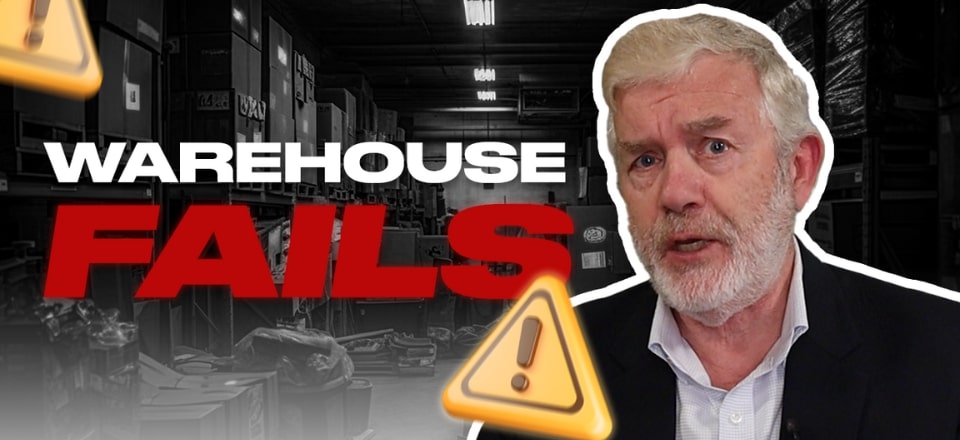We’ve experienced a significant increase in demand here at Logistics Bureau for assistance in improving warehouse performance.
Below, we share some of the main warehousing management problems we are helping with.
Additionally, we provide simple warehouse solutions and some symptoms of poor warehouse performance to look out for.
Watch the video below to discover actionable steps to elevate your warehouse performance.
We’ve been fixing many warehouse performance issues over the last couple of years, and this week, I’d like to examine some of the causes, symptoms, and solutions.
Key Issues:
1. Running Out of Space
Many clients approach us because their warehouses are over capacity. For instance, I recently saw a warehouse operating beyond 115% capacity. Typically, warehouses should not exceed 85-95% capacity to allow for smooth operations. When space runs out, it often indicates issues with inventory policy and stock management.
2. Performance
Performance issues often relate to picking and inventory accuracy. Poor stock management leads to a buildup of slow-moving or obsolete stock, hindering efficiency. Effective inventory management is crucial to prevent overstocking and ensure products move quickly through the warehouse.
3. Increasing Costs
Rising costs can stem from various factors, such as changes in order profiles or products. Regularly examining cost drivers within the warehouse helps identify and address these issues.
Solutions:
1. Layout
Optimizing the warehouse layout can significantly impact performance. For example, narrowing aisles and using articulated forklifts instead of reach trucks can increase capacity by 30%. Different layout configurations (e.g., U flow, L flow) can also enhance efficiency, depending on how products move through the warehouse.
2. Processes
Improving picking processes can boost efficiency. Whether using goods-to-person systems or optimizing pick paths, ensuring that pickers have a streamlined workflow is essential. Advanced technologies should only be adopted after thorough analysis to justify the investment.
3. Inventory
Maintaining the right inventory levels and ensuring accuracy are vital. Implementing ABC analysis and regular cycle counting helps manage stock better and prevents situations where pickers find insufficient products at locations.
4. Slotting
Slotting reduces pickers’ travel paths by strategically placing frequently picked items near dispatch areas. This method increases productivity by minimizing travel time and is based on a scientific approach using specialized software.
Symptoms to Watch For:
- Low Picking Rates: Picking rates vary by industry, but consistently low rates indicate inefficiencies.
- Cluttered Aisles: Products awaiting put-away suggest poor inventory management.
- Offsite Storage: Reliance on additional storage facilities points to inefficiency in the main warehouse.
- Slow Receiving and Put Away: Products not put away within 24 hours highlight issues in the workflow.
- Excess Picker Travel: Inefficient layouts causing pickers to travel unnecessarily long distances should be addressed.
- Rising Costs: Increasing costs per order signal underlying problems.
For more detailed discussions on these topics, watch the video above.
Related articles on this topic have appeared throughout our website, check them out:
- Warehouse Product Slotting: The Ultimate Guide
- KPIs for Your Warehouse: How to Choose and Use Them
- Planning a Warehouse Network and Design: Key Factors to Consider
- 10 Proven Principles for Best Warehouse Design and Operation
- Improve your Warehouse Productivity Through Product Slotting
Editor’s Note: The content of this post was originally published on Logistics Bureau’s website dated March 06, 2024, under the title “Warehouse FAILS – Common Warehouse Management Problems and Solutions“


